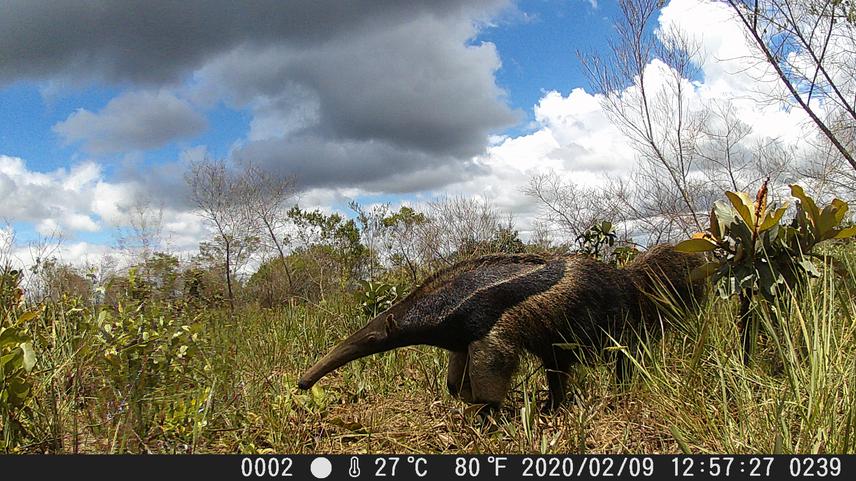Social media video featuring the project.
tamandua e baby p31
3 Sep 2019 Brasilia National Park, Brazil, Central and Latin America Mammals
This project aims to fill some knowledge gaps about the giant anteater ecology in a neotropical savanna area. The data on demography will provide information on the use of habitat, home range, and displacement of this species inside and outside the National Park of Brasilia (PNB). With the data obtained, it will be possible to evaluate what factors are essential to the species occupation. As the PNB allows the visitation of tourists in sure of its parts and its surrounds are composed of high-speed highways, a Forest Reserve, farms and a city, the information described above will contribute to the management of the park and the species population. The project will work with decisions makers and the park managers to decide possible solutions to mitigate any negative factor that may be observed and listed during the conduction of the project, seeking the conservation of the species and its population maintenance for long-term in the park.

According to IUCN, the giant anteater is a vulnerable species. The intense deforestation of the Brazilian savanna affects the species that is severely threatened by the loss of its habitat. Therefore, this project aims to estimate the demographics, genetic structure and population viability of the Giant Anteater in the National Park of Brasilia (the largest fragment of savanna within the Federal District of Brazil), in order to evaluate and direct conservation actions of the target species. We will install cameras-trap and do GPS radio-tracking for monitoring individuals and to obtain data about population density, activity pattern, the home range of the individuals, and the effect of seasonality.
With this information, I will perform a probability’s model of occupancy and detection to assess the relative importance of the variables of the studied area and highlight anthropogenic impacts (visitors, roads, constructions, fire). We will also collect blood samples to identify genetic diversity and check if inbreeding is occurring in the population. With the data obtained, a population viability analysis will be performed to estimate the probability of persistence of this population in the area, allowing direct action for the species protection and perpetuation in the protected area. Genetic data will show the degree of individual's kinship. High kinship can lead to low genetic diversity and increase species vulnerability. Data will be used to dialogue with decision-makers and zoos to discuss individual's reintroduction to help genetic diversity and the perpetuation of the anteater if it is necessary.
This project is a part of a Ph.D. thesis, and it will be arranged in three sections:
1- Evaluating activity pattern, home range and habitat use of the giant anteater in a protected area of the Brazilian savanna.
2- Investigating the diversity and genetic structuration of the giant anteater population in a protected area of the Brazilian savanna.
3- Verifying the probability of persistence of the anteater population in a protected area of the Brazilian savanna. The project will be carried out from 2019 to 2022.
Social media video featuring the project.
tamandua e baby p31